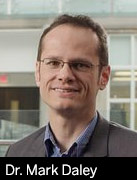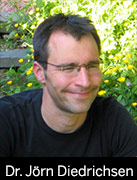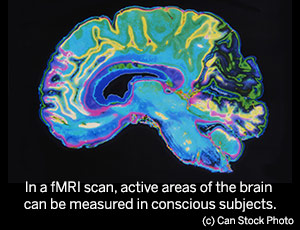Computational Brain Science: the networked language of the mind
A “circle” of friends is more like a web, with people networked to each other and collaborating in different ways, for different reasons at different times. For example, you may talk to one friend about your career and a second friend about your family – while they talk to each other about politics. Or you may call on a cousin you don’t see often because they’re knowledgeable about something you want to learn more about.
 The brain works the same way, with different parts functioning together at different times. And that “network” view has opened up advances in brain research that Western University is looking to expand even further.
The brain works the same way, with different parts functioning together at different times. And that “network” view has opened up advances in brain research that Western University is looking to expand even further.
“Researchers started off looking at single brain cells with a ‘coding’ perspective that made them look for structure and grammar,” says Mark Daley, Western’s Associate Vice-President, Research. “But while there is growth and logic in biological systems, we’ve learned that you can’t look at a single pair of cells and generalize to the whole brain.”
 “Neurons speak together in clusters,” says Jörn Diedrichsen, the Western Research Chair for Motor Control and Computational Neuroscience. “So looking at them individually is like trying to understand a society from the conversation of two people.”
“Neurons speak together in clusters,” says Jörn Diedrichsen, the Western Research Chair for Motor Control and Computational Neuroscience. “So looking at them individually is like trying to understand a society from the conversation of two people.”
Diedrichsen and Daley are part of Western’s inter-disciplinary Computational Brain Science (CBS) team. CBS researchers come from neuroscience, psychology, neurology, computer science, statistics, engineering and applied math.
 They collaborate to develop tools to analyze and apply data gathered from different kinds of scanning instruments, including functional magnetic resonance imaging (fMRI) of human brains.
They collaborate to develop tools to analyze and apply data gathered from different kinds of scanning instruments, including functional magnetic resonance imaging (fMRI) of human brains.
fMRIs are harmless, so they can be used to measure the brain activity of live and conscious subjects. This use of fMRIs isn’t new, however CBS is developing new ways of interpreting the data, such as live-mapping the areas of the brain that process images, sounds, sensations and emotions, etc., as they change.
For example, when subjects are shown photos of faces, a part of the brain known as the Fusiform Face Area lights up on the scans. That same area also lights up – a lot – if the subject sees pictures of familiar objects they’re interested in, such as cars. But if they’re not interested in cars, it only lights up a bit, which suggests that the area may be important in identifying things that we care about.
 Just as groups of people interact differently depending on context, parts of the brain also work together differently at different times. For example, if you want to speak, you’ll use neural clusters that string words into sentences. But if you are playing the piano, the same clusters may be used to recall the musical phrases that create the melody.
Just as groups of people interact differently depending on context, parts of the brain also work together differently at different times. For example, if you want to speak, you’ll use neural clusters that string words into sentences. But if you are playing the piano, the same clusters may be used to recall the musical phrases that create the melody.
So while researchers still don’t fully understand the language neurons use to “talk” to each other, live mapping has potential for human applications. Stroke recovery is one such use that CBS is looking at.
“Using low electrical stimulation of areas identified with functional imaging,” says Diedrichsen, “you can promote learning and plasticity.” He cautions that it’s not yet a cure, but it is an observable way of making an adult brain flex a little more.
Daley talks about the possibilities of using fMRI mapping to help premature babies, who can have a higher-than-average potential for brain damage. He describes how a medical team could “train” a premature baby’s brain to function in a normal, “neurotypical” way by monitoring it. When the imaging shows normal functioning, a recording is played of the baby’s mother singing, which reinforces neurotypically correct activity.
Daley says that this creates a positive neurofeedback loop, and that the same kind of loop could also have potential for people with certain types of mental illness.
The language of individual neurons has not yet been deciphered. But CBS is making great strides in learning how our neural networks make us who we are.
Western’s Computational Brain Science is an inter-disciplinary team working at the intersection of neuroscience, psychology, neurology, computer science, statistics, engineering and applied mathematics. It is part of Western’s Brain and Mind Institute, which promotes research, facilitates training, and fosters national and international collaborations in cognitive neuroscience.

